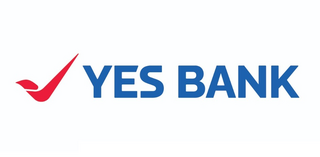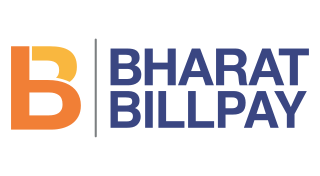Related Research Articles

The Reserve Bank of India, abbreviated as RBI, is India's central bank and regulatory body responsible for regulation of the Indian banking system. Owned by the Ministry of Finance, Government of India, it is responsible for the control, issue and maintaining supply of the Indian rupee. It also manages the country's main payment systems and works to promote its economic development. Bharatiya Reserve Bank Note Mudran (BRBNM) is a specialised division of RBI through which it prints and mints Indian currency notes (INR) in two of its currency printing presses located in Mysore and Salboni. The RBI, along with the Indian Banks' Association, established the National Payments Corporation of India to promote and regulate the payment and settlement systems in India. Deposit Insurance and Credit Guarantee Corporation was established by RBI as one of its specialized division for the purpose of providing insurance of deposits and guaranteeing of credit facilities to all Indian banks.

The National Bank for Agriculture and Rural Development (NABARD) is an All India Financial Institution (AIFI) and an apex Supervisory Body for overall supervision of Regional Rural Banks, State Cooperative Banks and District Central Cooperative Banks in India. It was established under the NABARD Act 1981 passed by the Parliament of India. It is fully owned by Government of India and functions under the Department of Financial Services (DFS) under the Ministry of Finance.
Peer-to-peer lending, also abbreviated as P2P lending, is the practice of lending money to individuals or businesses through online services that match lenders with borrowers. Peer-to-peer lending companies often offer their services online, and attempt to operate with lower overhead and provide their services more cheaply than traditional financial institutions. As a result, lenders can earn higher returns compared to savings and investment products offered by banks, while borrowers can borrow money at lower interest rates, even after the P2P lending company has taken a fee for providing the match-making platform and credit checking the borrower. There is the risk of the borrower defaulting on the loans taken out from peer-lending websites.
HDFC Bank Limited is an Indian banking and financial services company, headquartered in Mumbai. It is India's largest private sector bank by assets and the world's tenth-largest bank by market capitalization as of May 2024.
Payment and settlement systems are used for financial transactions in India. Covered by the Payment and Settlement Systems Act of 2007, legislated in December 2007, they are regulated by the Reserve Bank of India (RBI) and the Board for Regulation and Supervision of Payment and Settlement Systems.
Amazon Pay is an online payments processing service owned by Amazon. Launched in 2007, Amazon Pay uses the consumer base of Amazon.com and focuses on giving users the option to pay with their Amazon accounts on external merchant websites. As of March 2021, the service became available in Austria, Belgium, Cyprus, Denmark, France, Germany, Hungary, India, the Republic of Ireland, Italy, Japan, Luxembourg, Malaysia, Netherlands, Portugal, Spain, Sweden, Switzerland, United Kingdom, and the United States.

Yes Bank is an Indian private sector bank, headquartered in Mumbai, catering to retail customers, MSMEs, and corporate clients. The bank was founded by Ashok Kapur. Its network is spread across 300 districts in India and comprises 1,198 branches, 193 BCBOs and 1,287+ ATMs.
National Payments Corporation of India (NPCI) is an Indian public sector company that operates retail payments and settlement systems in India. The organization is an initiative of the Reserve Bank of India (RBI) and the Indian Banks' Association (IBA) under the provisions of the Payment and Settlement Systems Act, 2007, for creating a robust payment and settlement infrastructure in India.

CRIF High Mark Credit Information Services Pvt. Ltd. is an RBI-approved credit bureau in India. It serves retail, agriculture and rural, MSME, commercial and microfinance.
RuPay is an Indian multinational financial services and payment service system, conceived and owned by the National Payments Corporation of India (NPCI). It was launched in 2012, to fulfil the Reserve Bank of India's (RBI) vision of establishing a domestic, open and multilateral system of payments. RuPay facilitates electronic payments at almost all Indian banks and financial institutions. NPCI has partnered with Discover Financial and JCB to help the RuPay network gain international acceptance.

Bharat Bill Payment System (BBPS) is an integrated bill payment system in India offering interoperable and accessible bill payment service to customers through a network of agents of registered members as Agent Institutions (AI), enabling multiple payment modes, and providing instant confirmation of payment.

Unified Payments Interface, commonly referred to as UPI, is an Indian instant payment system as well as protocol developed by the National Payments Corporation of India (NPCI) in 2016. The interface facilitates inter-bank peer-to-peer (P2P) and person-to-merchant (P2M) transactions. It is used on mobile devices to instantly transfer funds between two bank accounts. The mobile number of the device is required to be registered with the bank. The UPI ID of the recipient can be used to transfer money. It runs as an open source application programming interface (API) on top of the Immediate Payment Service (IMPS), and is regulated by the Reserve Bank of India (RBI). Indian Banks started making their UPI-enabled apps available on Google Play on 25 August 2016.
Financial technology is an industry composed of companies that use technology to offer financial services. These companies operate in insurance, asset management and payment, and numerous other industries. FinTech has emerged as a relatively new industry in India in the past few years. The Indian market has witnessed massive investments in various sectors adopting FinTech, which has been driven partly by the robust and effective government reforms that are pushing the country towards a digital economy. It has also been aided by the growing internet and smartphone penetration, leading to the adoption of digital technologies and the rise of FinTech in the country

National Common Mobility Card (NCMC) is an open-loop, inter-operable transport card conceived by the Ministry of Housing and Urban Affairs under Prime Minister Narendra Modi's ‘One Nation, One Card' vision. It was launched on 4 March 2019. The transport card enables the user to pay for travel, toll tax, retail shopping and withdraw money.
BHIM is an Indian state-owned mobile payment app developed by the National Payments Corporation of India (NPCI), based on the Unified Payments Interface (UPI). Launched on 30 December 2016, it is intended to facilitate e-payments directly through banks and encourage cashless transactions. The application supports all Indian banks which use UPI, which is built over the Immediate Payment Service (IMPS) infrastructure and allows the user to instantly transfer money between 170 member banks of any two parties. It can be used on all mobile devices.
India Stack refers to the project of creating a unified software platform to bring India's population into the digital age. Its website describes its mission as follows: "India Stack is a set of open APIs that allows governments, businesses, startups and developers to utilize a unique digital Infrastructure to solve India’s hard problems towards presence-less, paperless, and cashless service delivery" Of the four "distinct technology layers" mentioned on the same page, the first, the "Presenceless Layer" is the most controversial as it involves storing biometric data such as fingerprints for every citizen. Since such markers are widely being adopted to enable cashless payment, the issue arises of fraudulent use of biometrics. The other layers are the Paperless Layer, which enables personal records to be associated with one's online identity; the Cashless Layer, a single interface to all national banks and online wallets; and the Consent Layer, which aims to maintain security and control of personal data.
PhonePe is an Indian digital payments and financial services company headquartered in Bengaluru, Karnataka, India. PhonePe was founded in December 2015, by Sameer Nigam, Rahul Chari and Burzin Engineer. The PhonePe app, based on the Unified Payments Interface (UPI), went live in August 2016.
Paytm Payments Bank (PPBL) was an Indian payments bank, founded in 2017 and headquartered in Noida. In the same year, it received the license to run a payments bank from the Reserve Bank of India and was launched in November 2017. In 2021, the bank received a scheduled bank status from the RBI.

BharatQR, developed by NPCI, Mastercard, and Visa, is an integrated payment system in India for mobile device. The system was launched in September 2016. It facilitates users to transfer their money from one source to another. The money transferred through BharatQR is received directly in the user's linked bank account. It provides a common interface between RuPay, Mastercard, Visa and American Express, and is interoperable with all the banks. Currently, BharatQR is supported on both Android and iOS devices.

The Digital Rupee (e₹) or eINR or E-Rupee is a tokenised digital version of the Indian Rupee, issued by the Reserve Bank of India (RBI) as a central bank digital currency (CBDC). The Digital Rupee was proposed in January 2017 and launched on 1 December 2022. Digital Rupee is using blockchain distributed-ledger technology.
References
- ↑ "RBI introduces Unified Lending Interface: All you need to know". India Today. 2024-08-26. Archived from the original on 2024-09-22. Retrieved 2024-08-26.
- ↑ "Unified Lending Interface is in pilot stage, will be launched nationwide in due course, says RBI Governor Shaktikanta Das". The Economic Times. 2024-08-26. ISSN 0013-0389. Archived from the original on 2024-09-22. Retrieved 2024-08-26.
- ↑ "RBI to launch Unified Lending Interface: What is it and how will it benefit borrowers". The Indian Express. 2024-08-26. Archived from the original on 2024-08-26. Retrieved 2024-08-26.
- ↑ "After UPI, RBI will now launch Unified Lending Interface or ULI for friction less credit". ANI News. Archived from the original on 2024-09-22. Retrieved 2024-08-26.
- ↑ Syed, Falaknaaz (2024-08-26). "RBI to Launch ULI for Frictionless Credit Small, Rural Borrowers". www.deccanchronicle.com. Archived from the original on 2024-08-26. Retrieved 2024-08-26.
- ↑ "RBI to launch Unified Lending Interface to provide 'frictionless credit'". The New Indian Express. 2024-08-26. Retrieved 2024-08-26.
- ↑ "RBI Governor Launches Unified Lending Interface (ULI): What Is This?". News18. 2024-08-26. Archived from the original on 2024-08-26. Retrieved 2024-08-26.
- ↑ "From UPI To Unified Lending Interface: RBI's Next Big Leap In Financial Technology". Times Now. 2024-08-26. Archived from the original on 2024-08-26. Retrieved 2024-08-26.